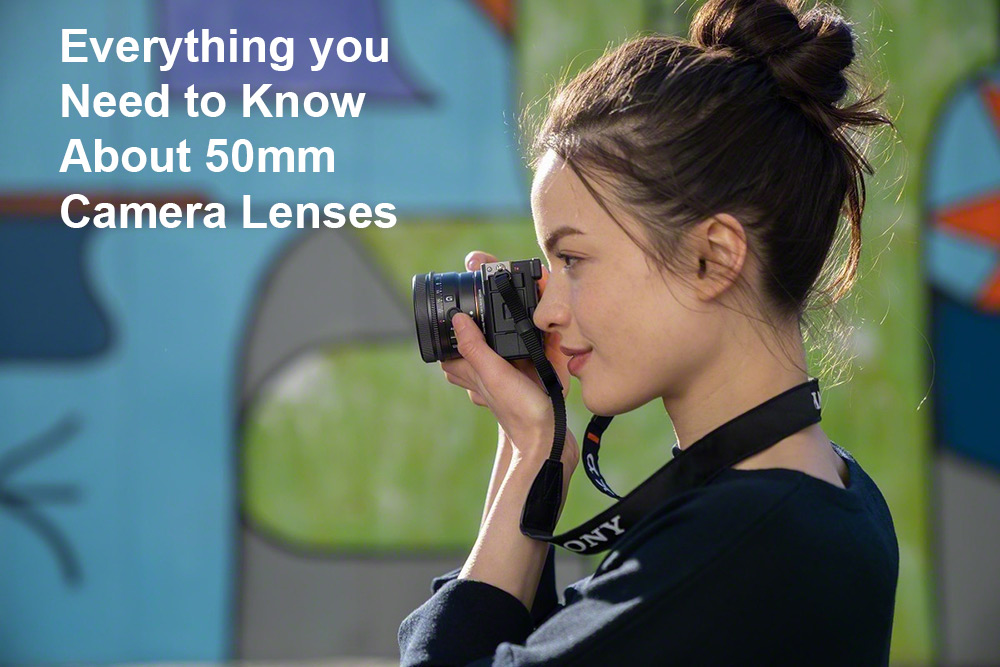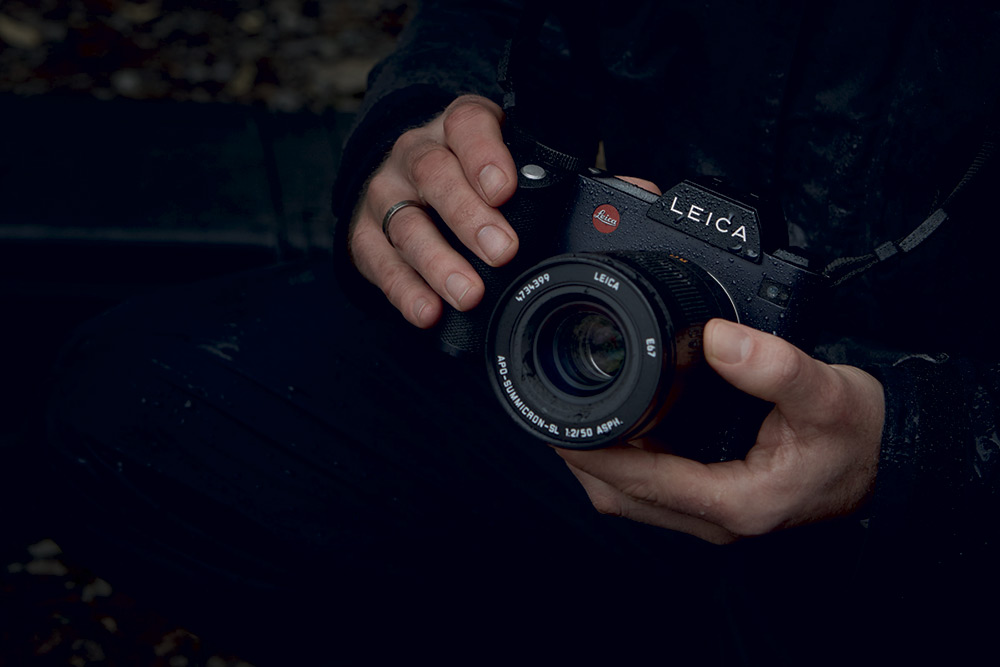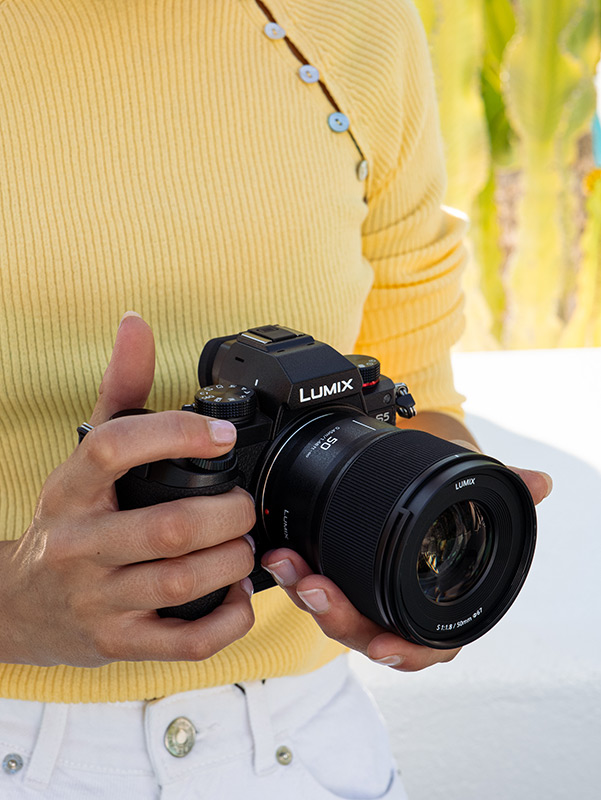- Call us: 01444 237070
- Contact Us
- Stores
- Sign In / Register
-
- Back
- Used Cameras
- Used Accessories
- Used Lenses
- Used Video
- Used Film Equipment
- Used Stock Alert
- Used Blank Test
- Sell or Part Exchange
- Used Clearance
- Recently Added Used Equipment
- Park Picks
- All Used Black Friday Deals
- Faulty
- Trade-In
- Blog
- New in
- Call us
- Contact us
- Stores
- Sign in
- Categories
- Tips & Inspiration
- Reviews
- News
- Events
- Features
- Buying Guides
- Competitions
50mm Lenses
The humble 50mm lens is considered an essential standard prime lens, offering roughly the same field of view as our human vision. Almost everyone who enjoys photography finds themselves deliberating over a 50mm at one time or another, but if you’re new to using prime lenses rather than zooms, you may be wondering what the advantage of a 50mm lens is and why so many photographers have one.

Whatever level of photography you enjoy, this focal width offers some key benefits to all. So, whether you’re new to photography or a seasoned professional, our top tips will help you to understand the differences between 35mm vs. 50mm lenses so you can choose the perfect one for your camera.
Why Use a 50mm Camera Lens?
First and foremost, the large majority of 50mm lenses offer superb value for money, as they are capable of capturing a diverse range of subjects while delivering superb image quality. As this is such a popular focal width, many camera manufacturers produce a number of different models for their systems, from entry-level lenses to ultra-wide aperture models.
With so many options available, even budget lenses offer extremely fast apertures when compared to kit lenses. This is great for photographers, as you’re able to capture razor-sharp results with a shallow depth of field and smooth blurry backgrounds to show off your subject. Regardless of whether you have a DSLR or mirrorless camera, there will be the perfect 50mm for you.

Some of the main advantages of a 50mm camera lens include:
- Versatile focal width similar to human vision, which makes a great lens for everyday snapshots, portraits, street photography, landscapes and more
- Low distortion results with a natural perspective
- Compact and lightweight, as they don’t need stabilisation or zooming mechanisms
- The maximum aperture will be wide to capture a shallow depth of field and blur backgrounds
- Excellent low-light capabilities for handheld shooting
- Provides very sharp results
- Helps to refine compositional skills as you ‘zoom with your feet’
- Makes it easier to capture bokeh effects
- Numerous models to choose from
- Excellent value for money
With such a comprehensive list of benefits, it’s no wonder this is one of the most popular prime lenses for photographers using virtually any camera system.

35mm vs 50mm Lens
Many photographers find themselves deliberating over 50mm and 35mm lenses. Despite being similar, there are some key differences which are outlined here.
- 50mm will get you closer to your subject than a 35mm, so you can remain discreet when shooting subjects such as weddings, street and candid portraits.
- 50mm lenses can deliver a shallower depth of field with more prominent bokeh.
- Images are less distorted when using a 50mm.
- 50mm lenses provide slightly greater compression, which is preferable for some subjects.
- You can eliminate distracting elements from your image more easily with the narrower field of view you get from 50mm lenses.
Many photographers considering using a 35mm lens will end up getting both, as they offer different results with endless creative opportunities.
How to Shoot with a 50mm Lens
With 50mm lenses being used for anything from journalism and portraits to street photography, you may be wondering how to shoot with one. This really depends on the subject you’re capturing, however, our tips will provide some ideas to experiment with and discover what you enjoy taking photos of.
When framing your shot, you should try to move around and ‘zoom with your feet’ – getting closer or further away from your subject to find a composition. Refine your compositions to include the most important elements of the image without removing too much by shooting too close or including too many distractions.
Try experimenting with different apertures to render a greater or shallower depth of field. This can highlight your subject against a soft background, or place them into an environmental portrait, with lots in focus. A shallow depth of field is ideal for many shots, but will leave a lot of your image blurry, which may not be ideal in some situations.
If your camera has subject detection, switch it on when using autofocus for people, birds or animals. This helps keep the eye or face sharp, even when using a very shallow depth of field. It’s also fun to shoot during low-light for atmospheric images with shadows and to create bokeh effects with background light. will give you some more ideas for shooting with a fast aperture lens. There are many ways to master shooting with a fast aperture lens and it may take some time to become proficient.

Which 50mm Lens Should I Buy?
When choosing your lens 50mm lens, you need to take into account the fact that an APS-C sensor alters the focal width due to the crop factor. For example, a Micro Four Thirds sensor is half as big as full frame, so an equivalent 50mm lens will be 25mm.
The table below will help you to find the perfect 50mm lens for you.
|
Lens Mount |
Lowest cost option |
Mid range |
High end option |
|
N/A |
|||
|
Olympus M.Zuiko Digital 25mm F/1.8 Lens Black
|
|||
|
Panasonic Lumix 50mm F/1.4 S Pro L-Mount Lens (full frame) |
If you’re looking to expand your kit, you may want to explore a number of different camera lens options to help you find the perfect one for your photography style.
With so many advantages to 50mm lenses, it’s no wonder lots of photographers add one to their collection. This focal width is capable of capturing extremely sharp results, offers a wider aperture than a kit lens and can gather light brilliantly even in low light situations. You can also shoot such a wide variety of subjects, all while refining your compositional skills and experimenting with bokeh. Keeping these benefits in mind, browse our huge range of lenses for every camera brand and discover the perfect option to capture new shots of your favourite subjects.
Share this post:
By Nick Dautlich on 30/03/2022
Nick Dautlich
Senior Content Writer and Product Reviewer
Nick Dautlich is the Senior Content Writer and Product Reviewer at Park Cameras, with over 15 years of photography experience. A Sony Imaging Professional and expert reviewer, Nick has worked with major brands such as Canon, Sony and Nikon. His work is also featured on Vanguard World UK’s website, Capture Landscapes, and Shutter Evolve. Nick’s photography includes National Trust projects and magazine covers and he is passionate about landscapes and storytelling. Nick also enjoys hiking and teaching his children about nature. Learn more on his profile page.

Trade in your old equipment
Fast and easy trade in service ensures your old gear is collected efficiently and you are paid quickly! It's very simple to trade in your unwanted photography gear. Just head over to our dedicated Sell or Part Exchange page, fill out the details, and we'll get back to you with an offer for your old gear. Take the cash, or put it towards the cost of your new gear. It's up to you! Find out more
sign up to the newsletter
Keep up to date on the latest photography news, events and offers. Sign up now
